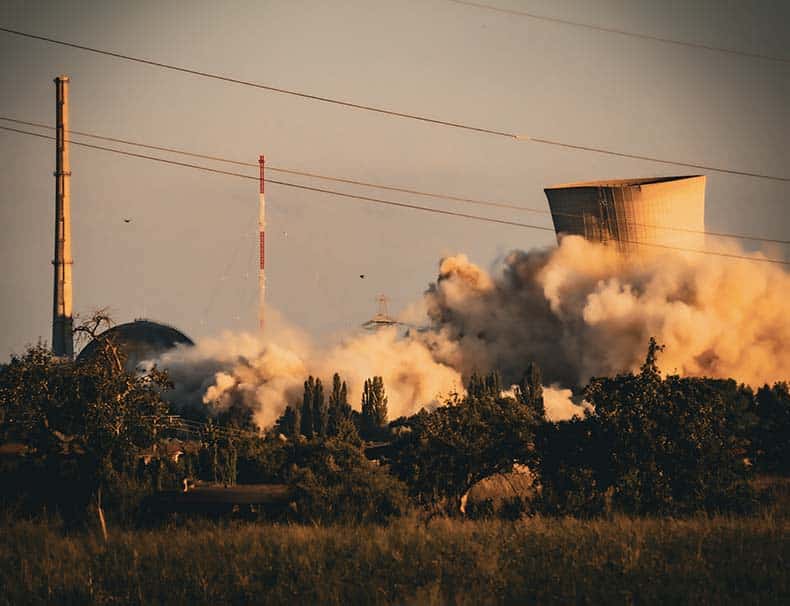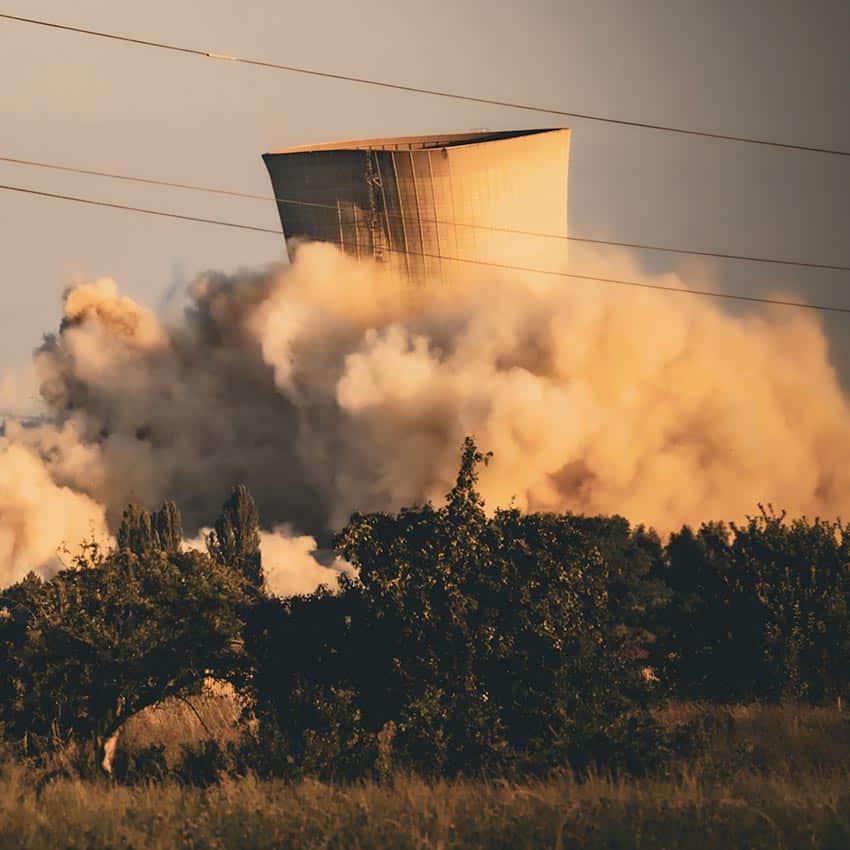The story of Germany and the laughter that echoed through the UN hall in 2018, when Donald Trump warned against its dependence on Russia, is more than a diplomatic anecdote. It is a symbol of a more profound crisis—a mixture of arrogance, naivety, and ideology that led Germany, and with it large parts of Europe, into an economic, energy, and geopolitical pitfall. That laughter, captured on camera as German Foreign Minister Heiko Maas and his delegation smiled dismissively, became within a few years a kind of mirror exposing Germany’s vulnerabilities.
The green energy policy, driven by extreme climate ideology under the leadership of figures like Greta Thunberg, led Germany to compromise its energy independence, increase its dependence on Russia, and pay a heavy economic and political price. Moreover, the internal contradictions of the green movement, personified by Thunberg, became evident when she expressed support for Hamas and other terrorist groups, exposing the green agenda as part of a broader ideological framework, at times anti-Western. This story, alongside the U.S. trade deficit with Europe and American frustration with Europe’s partial commitment to NATO, illustrates the growing internal tensions within the West, as Trump’s policies attempt to enforce a painful yet necessary correction.
A Moment of German Arrogance
On September 25, 2018, President Trump took the podium at the UN General Assembly and opened with a statement that sparked waves of laughter among those present. “In less than two years, my administration has accomplished more than almost any administration in the history of our country,” he said. The audience, including diplomats and world leaders, burst into spontaneous laughter, and Trump, with slight embarrassment, responded: “Didn’t expect that reaction, but that’s okay.”
The truly symbolic moment came when Trump directly addressed Germany and warned: “Germany will become dependent on Russian energy if it does not immediately change course.” Cameras, as mentioned, caught the smiles of the German delegation, led by Minister Maas. He and his colleagues appeared to dismiss Trump’s words as nonsense. That laughter, which was documented and went viral, was a formative moment, not because it showed the German diplomats’ lack of decorum, but because it revealed the depth of Germany’s naivety and arrogance at the time.
The context of Trump’s words was clear. He was referring to the Nord Stream 2 project, an 800-mile natural gas pipeline under the Baltic Sea, designed to double the supply of Russian gas to Germany. The Germans, led by Chancellor Angela Merkel, claimed the project was purely economic, aiming to reduce energy costs and ensure a stable supply. But countries like Poland, Ukraine, and the U.S. saw it as a strategic threat. Nord Stream 2 not only increased Germany’s dependence on Russia but also gave Moscow political leverage over all of Europe. As early as 2014, when Russia annexed Crimea and cut off gas supplies to Ukraine, it proved it was willing to use energy as a weapon. In his speech, Trump attempted to highlight this danger, but Germany, immersed in the optimism of the Merkel era, chose to dismiss it with laughter.
That laughter was not just a momentary reaction. It reflected a worldview that had taken shape in Germany since the end of the Cold War: a belief that Russia is a reliable partner, and that economic cooperation would lead to stability if not peace. It was this belief that led Germany to become the largest market for Russian gas in Europe, with about 55% of its gas consumption in 2018 coming from Russia. The existing pipelines, along with Nord Stream 2, turned Germany into Europe’s gas distribution hub—but also the weakest link in the continent’s energy chain. When Trump warned of this dependency, he was not speaking into a void. He pointed to a real danger that Germany, out of a mix of naivety and short-term economic calculations, chose to ignore.
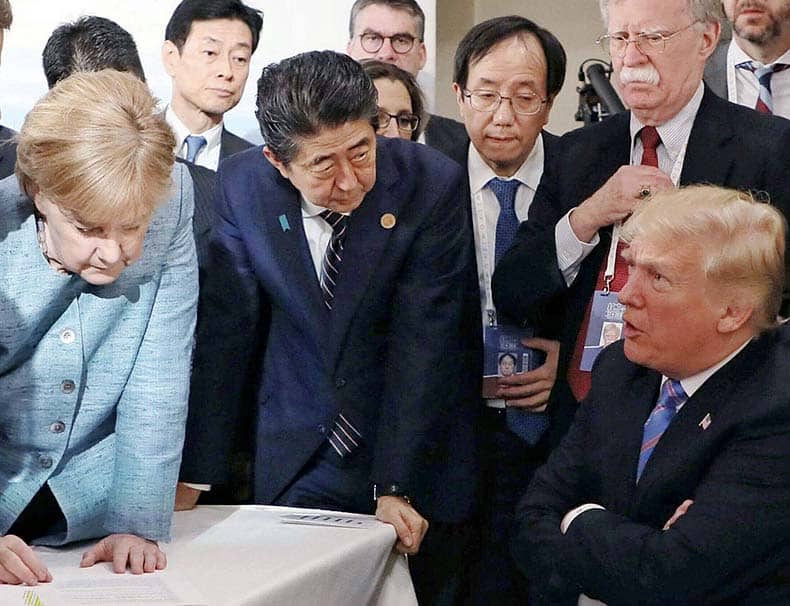
The Green Agenda: The Path to an Energy Pitfall
Germany’s dependence on Russia was not the result of poor planning but rather a conscious choice stemming from its climate agenda, known as Energiewende—the transition to renewable energy. Since the early 2000s, Germany has committed to reducing its carbon emissions by 80% by 2050, while closing nuclear and coal power plants and heavily investing in wind and solar. The idea was simple: to turn Germany into a global leader in green energy, while maintaining its status as an industrial powerhouse. In practice, however, this policy created internal contradictions that led to an unprecedented energy crisis.
After the Fukushima disaster in 2011, Chancellor Merkel announced the closure of all 17 of Germany’s nuclear reactors by 2022—a decision driven by public and political pressure from the Green Party and protestors inspired by figures like Greta Thunberg. The Swedish climate activist, who became a symbol of the climate fight after her school strike in 2018, pushed Europe to adopt extreme climate policies, accusing leaders of “stealing the childhood” of the younger generation. In 2019, her emotional speech at the UN, in which she accused leaders of offering “empty words,” resonated powerfully in Germany, where she was seen as a moral voice. The Green Party, which won 20% of the vote in the 2019 elections, turned Thunberg into a symbol of a new climate vision, accelerating the shutdown of traditional power plants.
However, the transition to renewable energy faced significant technological and economic challenges. Wind and solar power, despite investments totaling 500 billion euros by 2024, provided only 35% of Germany’s electricity consumption and were dependent on weather conditions. As a result, on days without wind or sun, Germany was forced to rely on natural gas, which became the most flexible energy source for bridging the gaps. This is where Russia entered the picture. Russian gas, cheap and readily available through pipelines like Nord Stream 1 and 2, became Germany’s go-to solution. In 2021, about 40% of Germany’s gas came from Russia, and projections anticipated an increase with the activation of Nord Stream 2. The green policy, intended to reduce dependence on fossil fuels, paradoxically made Germany more dependent on a fossil resource—Russian gas.
The crisis peaked with Russia’s invasion of Ukraine in February 2022. When Russia restricted gas supply to Germany, first by half and later almost entirely, energy prices in Germany quadrupled. Households paid an average of 2,000 euros more per year for electricity and heating in 2022, according to the Ifo Institute. Heavy industries, such as BASF and ThyssenKrupp, which employ millions, have announced production cuts and relocations to countries like the U.S., where energy costs are lower. Germany’s GDP shrank by 0.2% in 2023, and the economy entered a technical recession. The laughter of 2018 turned into bitter tears as Germany was forced to restart coal plants, previously scheduled for shutdown under Energiewende, to avoid an energy collapse. In 2023, Germany’s carbon emissions rose by 2%, turning the green agenda into an international laughingstock.
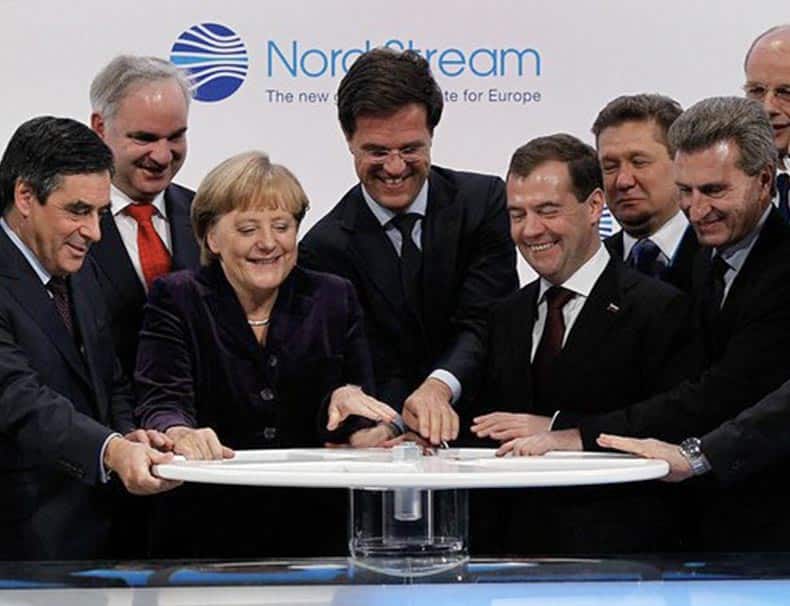
A Duel of Stares and Tweets
Thunberg, who became the face of the climate movement, played a central role in advancing Germany and Europe’s green agenda. Her speeches, emphasizing the “moral urgency” of the climate crisis, inspired millions of young people to protest in the streets and pushed governments to adopt overly ambitious targets, sometimes at the expense of economic realities. In Germany, Thunberg achieved near-saintly status, with newspapers like Die Zeit dubbing her “the voice of a generation.” She influenced decisions such as the closure of nuclear reactors and the massive investment in wind and solar energy. Yet beyond her inspirational image, she also became a polarizing figure, mainly due to her animosity toward Donald Trump, which culminated in the infamous “death stare” moment at the UN in 2019.
That moment, which went viral on social media, occurred on September 23, 2019, when Thunberg and Trump crossed paths in the halls of the UN in New York. The young Swede, who had just delivered an impassioned speech at the UN Climate Summit, accusing world leaders of failing to address the climate crisis—“How dare you? You have stolen my dreams and my childhood with your empty words,”—encountered Trump, who made a surprise 14-minute appearance before heading to a religious freedom event. As he passed her, photographers captured her cold, piercing gaze, later dubbed the “death stare” on social media. The look garnered millions of views and became a viral meme, with captions such as “Greta Thunberg looks at Trump the way we all feel” and “That’s the look you give your worst enemy.”
Thunberg’s animosity toward Trump was not just a momentary reaction. It stemmed from a deep ideological clash. Trump, who denied climate change and called it a “Chinese hoax,” withdrew from the Paris Agreement in 2017 and rolled back environmental regulations, making him the embodiment of everything Thunberg opposed. She, on the other hand, saw herself as a representative of a generation forced to deal with the consequences of leaders’ failures. In an interview with Sweden’s Skavlan program, she explained the stare wasn’t planned: “I stopped because suddenly he appeared, and the security told me to step aside. I was shocked.” She added that she wouldn’t bother speaking to him: “He doesn’t listen to scientists, so why would he listen to me?”
That stare was more than just a symbol of personal tension. It became a metaphor for the clash between the green movement and the conservative establishment, particularly between Thunberg and Trump. The president responded to her speech and stared with a mocking tweet: “She seems like a thrilled young girl looking forward to a bright and wonderful future. So nice to see!” Thunberg replied by changing her Twitter bio to “A thrilled young girl looking forward to a bright and wonderful future,” turning Trump’s mockery into a weapon of her own. Later, when she was named Time magazine’s 2019 Person of the Year, Trump attacked her again, tweeting that she should “work on her anger management problem” and “go to a good old-fashioned movie with a friend.” Thunberg clapped back in 2020 with a tweet of her own, racking up 452,000 likes in hours: “Donald must work on his anger management problem. Chill, Donald, chill!”
This animosity was not merely personal. It reflected a broader conflict between the climate movement, focused on the moral urgency of the environmental crisis, and national economic policies that prioritized cheap energy and economic growth. Thunberg, with her penetrating stare, became a symbol of a generation demanding change, but also a figure representing the extremism of the green movement, which pushed policies like Energiewende without regard for the constraints of reality.
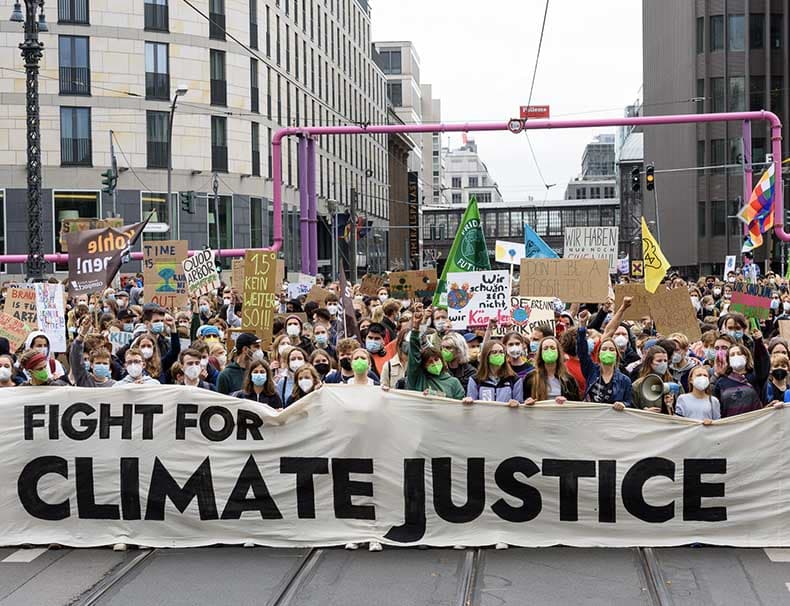
Cracks in the Green Vision
Thunberg’s animosity toward Trump, embodied in her infamous death stare, was only the beginning of controversies surrounding her persona. Over the years, she revealed positions that distanced her from the European mainstream and portrayed the green movement as part of a broader, more complex ideological framework.
In October 2023, Thunberg sparked uproar when she posted explicit support for Hamas and radical pro-Palestinian groups on social media, calling for “climate justice in the occupied territories.” She joined protests in Amsterdam where anti-Israel chants were heard, and refused to condemn Hamas’s attack on Israel on October 7, in which 1,200 civilians were killed. This support, which emerged after years of Thunberg being portrayed as a symbol of moral purity, shocked many in Europe. In Germany, where support for Israel is a fundamental political principle due to the Holocaust, the Green Party quickly distanced itself from Thunberg, and Foreign Minister Annalena Baerbock called her positions “unacceptable.”
Thunberg’s support for Hamas was not incidental. It exposed the connection between the green movement and broader anti-Western currents that see the West, especially Israel and the U.S., as the root of all evil. The green movement, which led Germany to shut down nuclear reactors and rely on Russian gas, revealed itself to be part of an ideological complex that promotes not only environmental activism but also anti-capitalist and anti-Zionist positions. Thunberg, who had led Europe by the nose with her calls for “climate justice,” became a symbol of contradiction: on the one hand, demanding action against carbon emissions, and on the other, supporting groups that promote violence and global instability—not to mention the widespread indifference of the Muslim world to climate issues.
Trade Deficit and American Frustration
Germany’s energy crisis and the infamous UN laughter are just parts of a more complex relationship between the U.S. and Europe, in which Trump and his Treasury Secretary, Scott Mnuchin, view Europe as exploiting America’s generosity. The U.S. trade deficit with the European Union, which reached $180 billion in 2024, is a significant source of frustration. Germany, as Europe’s economic powerhouse, contributes significantly, exporting cars ($60 billion annually, about 40% of the U.S. auto market), machinery, and luxury goods.
Companies like BMW and Mercedes sold 1.2 million vehicles in the U.S. in 2024, while American manufacturers like General Motors struggled to enter the European market, which is shielded by 10% tariffs and strict environmental regulations. France, with companies like Sanofi exporting $5 billion in pharmaceuticals, also contributes to the deficit, while American firms like Merck face similar barriers.
American frustration is not limited to trade. The U.S. funds about 70% of NATO’s $40 billion budget in 2024, while Western European countries—Germany (1.5% of GDP on defense), France (1.9%), and Italy (1.4%)—fail to meet the 2% goal agreed upon in 2014. Poland, which spends 4% of its GDP, is an exception, but the major Western European nations enjoy American military protection without bearing a proportional share of the burden. A 2025 Gallup poll showed that 62% of Americans believe Europe is taking advantage of the U.S., a sentiment that Trump and Bessant have turned into a rallying cry. “Europe sells us billions, but doesn’t pay its share for security,” Bessant said in an interview with Meet the Press, adding that tariffs are a “historical correction” of this imbalance.
Reactions in Europe vary but reflect growing tension. German Chancellor Christian Lindner, who took office in 2025, called for a “united front” against Trump’s tariffs and proposed reciprocal tariffs on American software and meat. Emmanuel Macron, on the other hand, chose a diplomatic path, offering bilateral negotiations to reduce tariffs in exchange for increasing France’s defense budget by €10 billion in 2026. Right-wing parties, such as Alternative für Deutschland (AfD) and Marine Le Pen’s Rassemblement National, expressed cautious support for Trump, viewing his policies as an inspiration for economic nationalism. Conversely, Europe’s Greens and Socialists condemned the tariffs as “destructive to the environment and free trade,” warning of a trade war that could harm economic growth. A 2025 OECD report estimated that reciprocal tariffs could reduce the EU’s GDP by 0.3% by 2027, while Germany, heavily reliant on exports, could suffer a 0.5% blow.
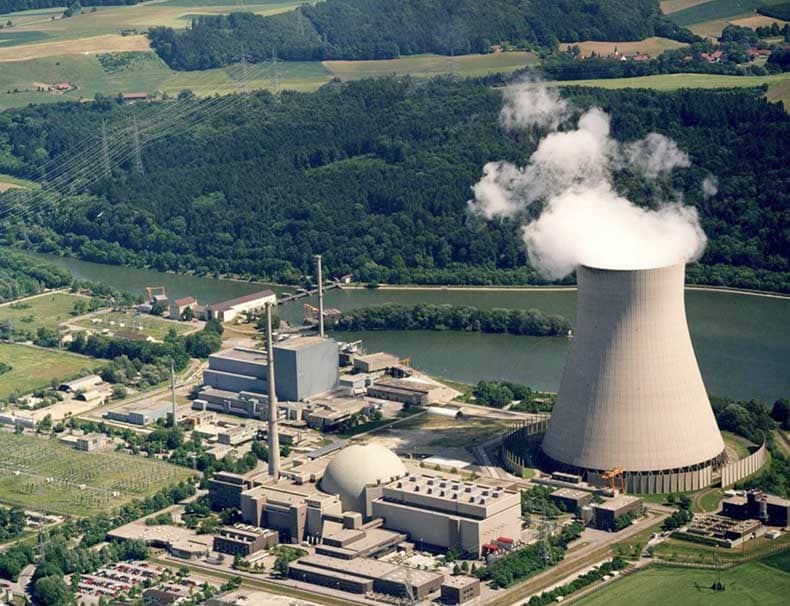
The West Against Itself: Lessons and Adjustments
Germany’s story—the UN laughter, its dependence on Russia, and the energy crisis—is a parable for the West’s broader crisis. The green agenda, championed by figures like Thunberg, offered a seductive moral vision but ignored economic and geopolitical realities. Germany, believing it could lead the world into a green utopia, found itself dependent on the resources of an autocratic regime, while weakening its economy and global standing. Thunberg, who transformed from a symbol of hope into a polarizing figure, revealed the dangers of an ideology that overlooks internal contradictions. Her support for Hamas, alongside the green movement’s calls for “global justice,” showed how environmental movements can become tools for anti-Western agendas that endanger the very stability they claim to promote.
Trump’s tariff policy, perceived in Europe as destructive, is an attempt to correct this imbalance. It reflects deep frustration with the trade deficit, Europe’s dependence on American defense, and the arrogance Germany displayed in 2018. But this correction is not without risks. A trade war with Europe could hurt both sides and weaken the Western alliance in the face of threats like China and Russia. Germany, already reeling from the consequences of its energy decisions, now faces a choice: to continue with its green ideology and pay a steep economic price, or to adopt a pragmatic approach that combines green energy with energy independence. This story is not over yet, but it reminds us that a fleeting laugh can turn into prolonged weeping, and that ideology without a foundation in reality is a recipe for disaster.
